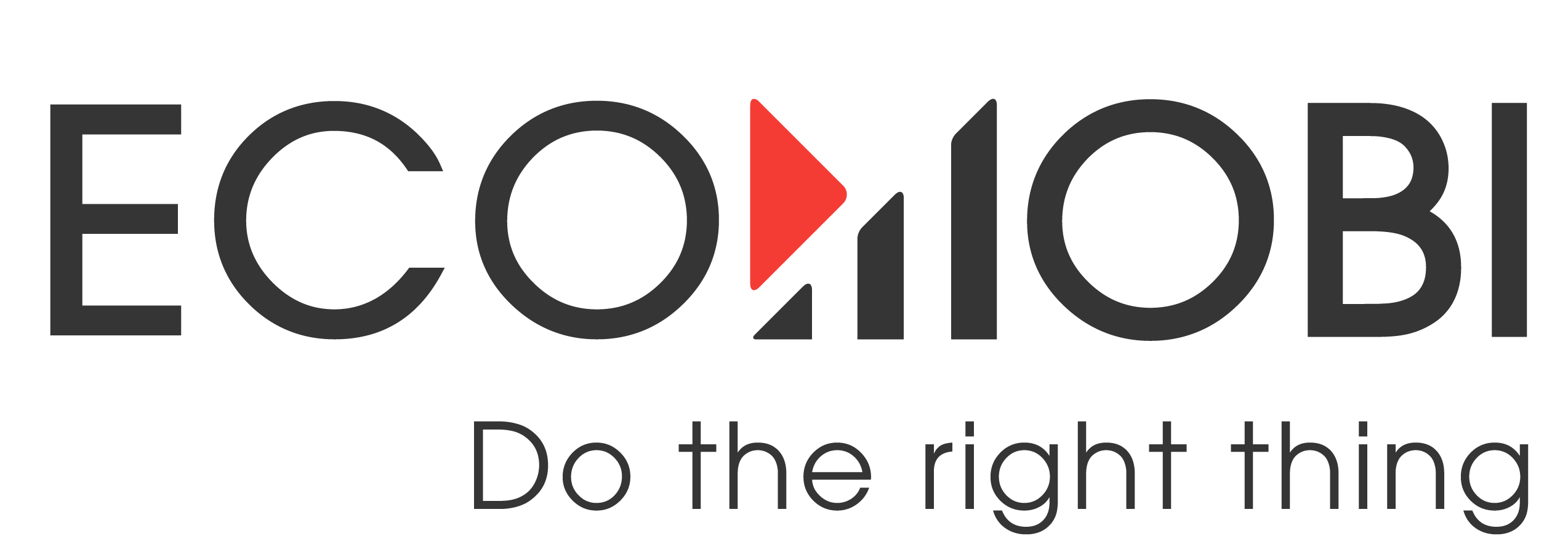In today’s digital landscape, content creation isn’t just a creative outlet – it’s a lucrative career path. But when it comes to making money through YouTube and TikTok, which platform offers the best opportunities for creators? YouTube, the established giant with robust monetization features, or TikTok, the viral sensation with explosive growth? This article, Ecomobi providing actionable insights, success stories, and a comparison of revenue models to help you decide which platform suits your goals.
Why choose Youtube or Tiktok for monetization?
Both platforms offer unique ways to earn money online through content creation, but they cater to different audiences, content styles, and monetization strategies. YouTube’s strength lies in its long-form content and stable revenue streams, while TikTok thrives on short, viral videos with rapid audience growth. Let’s explore how to make money on YouTube and TikTok to find the best fit for your goals.
Key Takeaways: YouTube vs. TikTok for Monetization
| Criteria | YouTube (Long-Form & Shorts) | TikTok (Short-Form) |
| Main Content | In-depth videos, tutorials, vlogs, live streams, Shorts | Short, trending, viral content |
| Monetization | Ads (YPP), YouTube Premium, Super Chat/Stickers, Memberships, Affiliate Marketing (YouTube Shopping), Merch | Creator Fund (limited regions), Live Gifts, Brand Sponsorships, TikTok Shop Affiliate |
| Income Stability | High, passive income from evergreen content | Volatile, relies on continuous viral content |
| Audience Reach | ~1.5 billion MAUs, all age groups (strong 18-49), global | ~1 billion MAUs, Gen Z & Millennials dominant, rapid viral spread |
| Growth Speed | Slower, requires consistent quality and SEO | Faster, high viral potential |
| Production Cost | Generally higher (equipment, editing for long-form) | Lower (smartphone, creative ideas) |
| Best For | Long-term, stable income; in-depth content; building dedicated communities | Quick audience building; viral trends; brand collaborations |
Understanding the Money-Making systems: YouTube vs. TikTok
Both YouTube and TikTok offer creators ways to monetize their content, but their core systems differ significantly.
How to make money on Youtube
- YouTube Partner Program (YPP): This is the most common way creators earn money online YouTube. Once eligible (1,000 subscribers and 4,000 public watch hours in 12 months, or 10 million valid Shorts views in 90 days), you can earn 55% of the advertising revenue displayed on your videos. On average, creators earn $0.3 – $0.5 per 1,000 views, though this varies by niche and audience location.
- YouTube Premium Revenue: When YouTube Premium subscribers watch your content, you receive a portion of their subscription fee based on their watch time. This is an ad-free experience for viewers, and creators still get paid.
- Super Chat & Super Stickers: During live streams and Premieres, viewers can purchase Super Chats to highlight their messages in the chat or buy Super Stickers to show support, with a portion of the revenue going to the creator.
- Channel Memberships: Offer exclusive perks (badges, emojis, members-only content, live Q&As) to viewers who pay a recurring monthly fee to become members of your channel. This builds a dedicated community and provides a stable income source.
- Affiliate marketing (YouTube Shopping): YouTube is expanding its shopping features, allowing creators to tag products in their videos and earn commissions on sales. This is particularly effective for product reviews, hauls, and unboxing content. Ecomobi.com helps creators connect with brands for such opportunities.
- Brand sponsorships: Collaborate with brands to create sponsored content, product placements, or dedicated campaigns. This can be a highly lucrative method for creators with engaged audiences.

How to earn money on TikTok
TikTok is still in the process of building a strong monetization ecosystem with advertising features, although TikTok’s Creator Fund has not yet been applied to the Vietnamese market. Here’s how to earn money online on TikTok:
- TikTok Creator Fund: While a significant source of income for many creators globally, it’s important to note that the TikTok Creator Fund is currently NOT applicable to creators in SEA. For regions where it is available, it pays creators based on video views, authenticity, and engagement, but payouts can be unpredictable.
- Livestream gifts: During live sessions, viewers can send virtual gifts, which can then be converted into real money. This is a direct way for fans to support their favorite creators.
- Sponsorship contracts/brand Deals: Brands frequently partner with TikTok creators for viral marketing campaigns. Due to TikTok’s algorithm, even accounts with fewer followers can achieve massive reach, making them attractive to brands.
- Affiliate TikTok: This is a major income stream for creators. By attaching direct purchase links in videos through Tiktok LinkShare, creators earn commissions on sales. This has fueled the rise of “shoppertainment” on the platform.
- Livestream gifts: This is also a part of TikTok Affiliate commission. Specifically, Tiktok has a feature that allows viewers to send gifts during livestreams, then creators can convert the gifts into real money.


Make money through YouTube and Tiktok: Comparison of stability and income potential
When considering making money through YouTube versus TikTok, stability and long-term income potential are key factors.
YouTube’s long-term stability
- YouTube excels in generating long-term, passive income. An “evergreen” video can continue to attract views and ad revenue for years after it’s published, thanks to YouTube’s powerful search and recommendation algorithms. This allows creators to build a substantial content library that generates income over time, resembling a passive income stream.
- Revenue from advertising, YouTube Premium, and Memberships tends to be more stable due to its reliance on a large viewer base and Google’s established advertising system.
TikTok’s viral, short-term bursts
- TikTok offers the potential for rapid, explosive growth. Videos can go viral overnight, attracting millions of views. However, the lifecycle of a TikTok video is typically short. Creators often need to continuously produce new, trending content to maintain engagement and income.
- While a quick boom can be exciting, it doesn’t always guarantee sustained income without a consistent, high-volume content strategy.

Read more:
Comparing making money through YouTube and TikTok: Audience reach and behavior
Understanding your target audience is crucial for effective monetization.
YouTube’s diverse audience:
- Reach: YouTube boasts approximately 1.5 billion monthly active users globally, catering to a vast demographic from students to older generations.
- Content length: Its flexibility in video length, from short-form YouTube Shorts to hours-long content, allows creators to delve into in-depth topics, tutorials, and long-form vlogs.
- Behavior: YouTube users often seek detailed information, educational content, and entertainment that requires longer viewing times. The platform’s robust search and recommendation system facilitates targeted content discovery. The 18-49 age group is particularly strong, often searching for knowledge-based and business-related content.
TikTok’s engaged, younger demographic
- Reach: TikTok has rapidly grown to over 1 billion monthly users, with a dominant presence among Gen Z and Millennials.
- Content Length: Its focus on short, snappy videos (under 3 minutes) makes content highly shareable and quick to consume.
- Behavior: TikTok thrives on quick “scrolling” viewing habits and viral trends. Creators must capture attention within the first few seconds to prevent viewers from swiping away. The platform fosters strong engagement through features like duets, stitches, and quick comments, leading to rapid content spread and user-generated content loops.


Channel growth and competition
Building a YouTube channel demands patience, consistent high-quality content, and strategic SEO (titles, thumbnails, descriptions). Creators often invest in equipment for better video and audio quality. While the competition is fierce, once a stable viewership is established, income can be highly sustainable.
TikTok offers faster initial growth due to its viral potential and powerful recommendation algorithm, which can push content to new users regardless of follower count. However, staying relevant means constantly adapting to trends and innovating. A quick viral hit doesn’t guarantee long-term income without a sustainable content strategy.

Production costs and content requirements
Between the two platforms, YouTube requires higher video quality and is more technically demanding. CCreators often need dedicated cameras, microphones, and editing software to produce longer videos, optimizing viewing time and the ability to insert multiple ads.
Meanwhile, TikTok champions rapid, simpler content production.Often, a smartphone and a creative idea are all you need to get started, with videos typically ranging from 15 seconds to 3 minutes. This lower barrier to entry contributes to its widespread appeal.

Which platform is easier to make money on?
The “easier” platform depends on your goals and resources. Below is a summary table of the main features of both platforms to help you have a more general view of choosing to make money through YouTube and TikTok.
| Criteria | TikTok | YouTube |
| Main Content Type | Short, trending, user-generated content | Video dài, chuyên sâu, bao gồm cả livestream |
| Average time viewed daily | 58 minutes 24 seconds | 47,5 minutes |
| Main target group | 18-24 years old (biggest group), 25-34 years old | 25-34 years old (biggest group), 35-44 years old |
| Algorithm | Based on user interactions, video information, device/account settings | Watch time, click-through rate (CTR), user engagement, video freshness |
| Content exploration | Powerful algorithms drive viral content on the “For You Page” | Personalized recommendations based on watch time, user engagement, and SEO optimization |
| Most effective advertising | Challenge, collaboration with influencers, KOL/KOC | Sponsored content, non-skippable video ads |
| Ability to make money | On average, mainly through Tiktok affiliate | High, through YouTube Partner Program and AdSense |
| Interaction strategy | Viral challenges, content refresh (duet, stitch), interactive tools | High-quality content, direct interaction via comments, livestreams, and community posts |
| Build community | Fast, trendy, attracts immediate but short-term engagement | Sustainable relationships with followers, built through consistent & quality content |
TikTok will have an easier time building an initial audience thanks to the TikTok algorithm for distributing content and the viral nature of short videos. New creators can reach millions of viewers in a short period of time without spending too much time.
However, for a sustainable, long-term income stream from evergreen content, YouTube holds the advantage. A single successful YouTube video can generate revenue for years, offering a more predictable and less demanding monetization strategy compared to TikTok’s constant need for fresh viral content.
Should you choose to make money through YouTube or TikTok?
The decision of whether to focus on making money through YouTube or TikTok depends on your strengths and goals.
If you are a new creator seeking rapid audience growth and enjoy producing short, trendy, and engaging content, TikTok can be an excellent starting point. It’s perfect for quickly building a following and securing brand collaborations.
However, if your goal is to build a long-term, stable income stream with in-depth content, YouTube is the platform of choice. It allows you to create evergreen content that continues to generate revenue over time and fosters a deeply engaged community.
Ultimately, a combination of both platforms can yield the best results. Leverage TikTok’s viral potential to drive traffic and build an initial audience, then transition viewers to your YouTube channel for more in-depth content and stable monetization. This integrated strategy can maximize your online income potential.

Can beginners earn money on YouTube?
Yes, beginners can earn money on YouTube, but it requires consistency, quality content, and patience. You’ll need to meet the eligibility requirements for the YouTube Partner Program (YPP), which include 1,000 subscribers and either 4,000 valid public watch hours in the past 12 months or 10 million valid public Shorts views in 90 days. Many creators start with affiliate marketing or selling their own products before qualifying for YPP.
How much money can you make from YouTube views?
While YouTube pays creators based on ad views, the exact revenue per 1,000 views (CPM/RPM) varies widely. In general, RPMs (Revenue Per Mille, or per 1,000 views) can range from $0.50 to $5.00+ in some niches. Factors like audience demographics, ad format, and content niche influence this.
Which platform offers more sustainable income: YouTube or TikTok?
YouTube generally offers more sustainable and passive income due to its long-form content, strong search capabilities, and established ad revenue model. Videos can continue to generate income for years. TikTok, while offering rapid virality, often requires continuous content creation to maintain an income stream, making its monetization more short-term and trend-dependent.
What’s the best niche for YouTube monetization?
High-paying niches include tech, finance, and education. For example, videos on “how to earn money online YouTube” or “investing tips 2025” attract engaged audiences and advertisers.
How do I optimize my YouTube videos for search?
Use tools like TubeBuddy to find low-competition keywords, create clickable thumbnails, and include your main keyword in the title, description, and tags.
Frequently Asked Questions (FAQs)
Ready to start making money through YouTube or TikTok? Join Ecomobi’s affiliate marketing platform to boost your earnings with high-commission product links. Follow our blog for more tips on monetizing your content and growing your channel in 2025!
Contact us, Ecomobi:
– Fanpage: https://www.facebook.com/ecomobi.ssp
– Instagram: https://www.instagram.com/ecomobi_ssp
– Tiktok: https://www.tiktok.com/@ecomobipassiovietnam
– Email: info@localhost



















